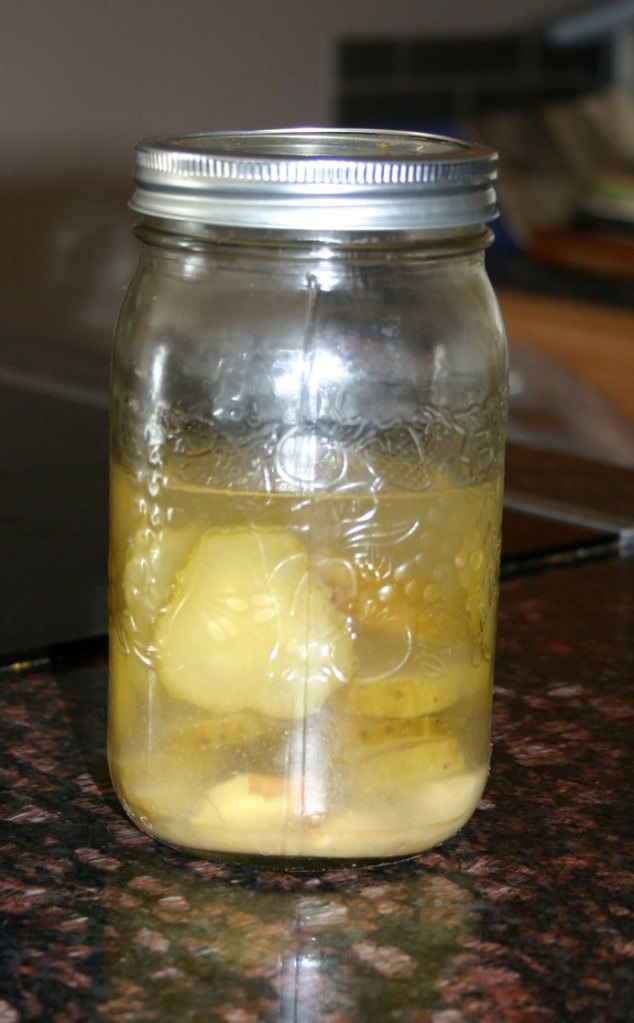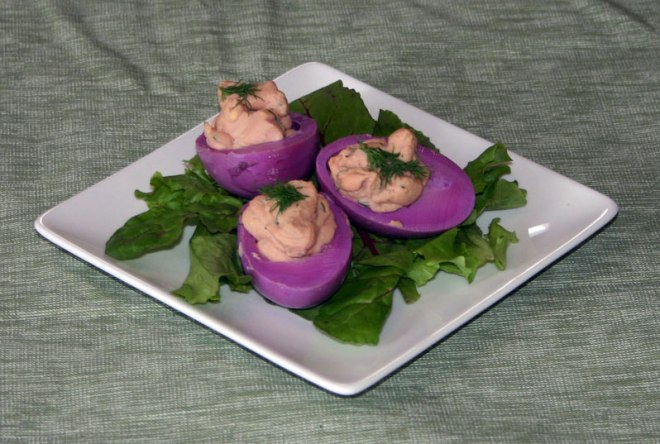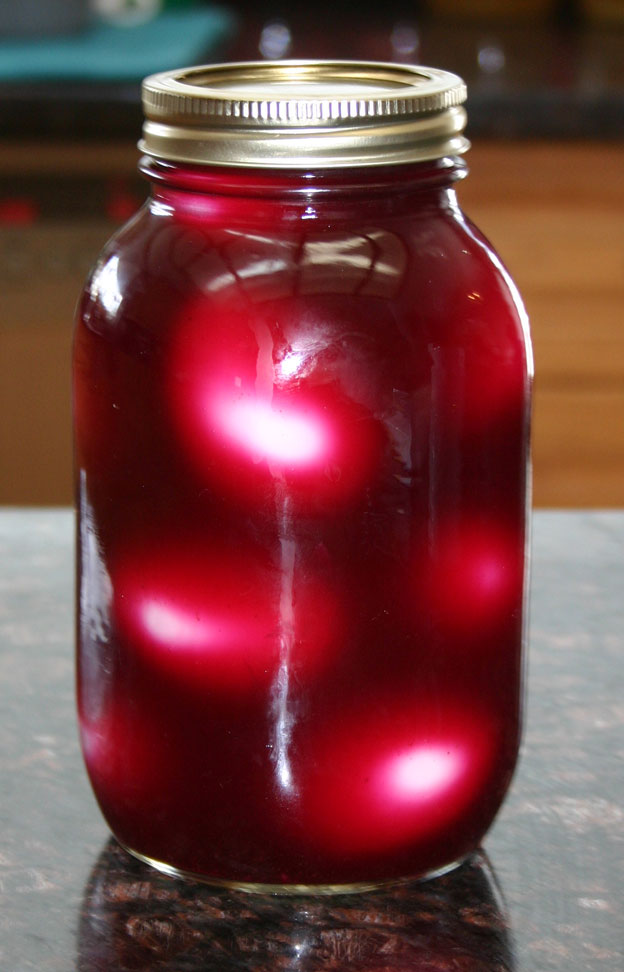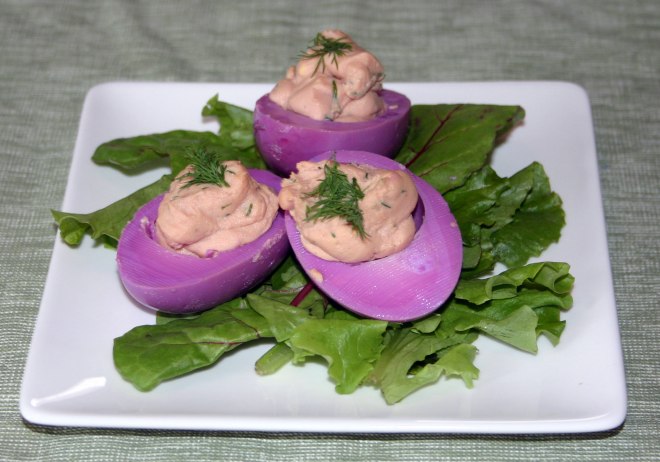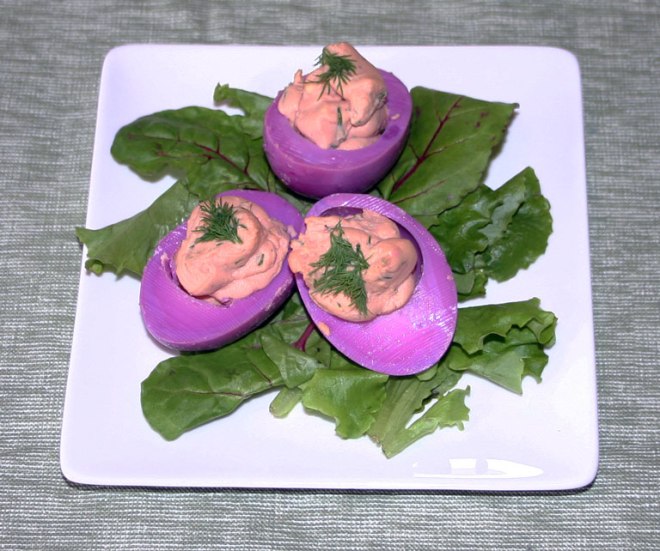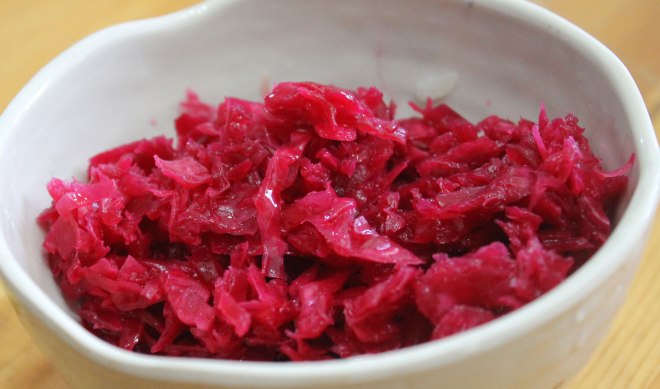I ended up with a bunch of pickling cucumbers in my CSA box a week or two ago, so decided that it was time to make some pickles.
I like to enjoy some probiotic rich food with every meal if I can, and these pickles fit the bill perfectly….
Because the cucumbers I received were not very even in size, I decided to slice them this time and make pickle slices. You could easily make whole cucumber pickles or even use cucumbers cut lengthwise into spears. Whole cucumbers may take a little longer depending on the size, but the process is exactly the same.
In order to keep the cucumber pickles crunchy, you need to use a source of tannin – some people use grape leaves, but I decided to use green tea because that is what I have handy for making my kombucha.
Lacto-Fermented Garlic and Dill Pickles
Makes 1 pint jar
- 4-5 medium sized pickling cucumbers – enough to ¾ fill a pint sized mason jar when sliced
- 2 TBSP pink Himalayan salt or unrefined sea salt
- 2 cups boiling water
- 2 green tea teabags
- 2-3 cloves garlic
- 2-3 large sprigs fresh dill
Place the teabag and the salt in the 2 cups of boiling water and leave to stand until at room temperature. Stir well to dissolve the salt.
Meanwhile slice the cucumbers into ¼” thick slices.
Peel the garlic but leave the cloves whole. Place the garlic and dill in the bottom of the jar and then fill the jar with the cucumber slices.
Once the tea/brine has cooled to room temperature, pour this in the jar until they are covered with the brine. You probably will not need all the brine, but it is better to have made too much!
Now you need to weigh them down. As you can see in the picture above, I used a smaller mason jar that fit nicely inside the mouth of the larger jar. Other people use clean, boiled river-rocks, glass marbles or even a food-grade plastic bag filled with more brine. Anything will work as long as it is non-toxic, will fit inside the jar, and will hold the pickles under the brine. A glass jar just works well for me.
Cover the jar and any weights with a clean, densely woven cloth. I like to use a tea-cloth as they wash well in case of any accidental brine spillage, yet they are densely woven enough to keep bugs out. Do NOT try to use the cheap, loosely woven “Cheesecloth” sold in grocery stores – the weave is far too loose on this, and even with multiple layers fruit-flies and other bugs will get into your pickles! Hold the cloth in place with either string tied tightly round the jar or an elastic band.
Leave your pickles on the counter for 4-6 days at room temperature. I like to stand the jar in a dish to catch any brine that might spill over the edge of the jar – it makes less of a mess on the counter.
After 4 days, taste one of the pickles and see if it is to your liking. If it is, now is the time to put a lid on the jar and stash them in the fridge.
If not, leave them on the counter-top for an extra day or two.
Serve cold with your favourite meals….
If using small whole pickles, they may take an extra 3-4 days depending on size. Really large whole pickles might take up to a week or two to get properly pickled.
When making whole pickles I will sometimes use a crock or a large pot – in this case a baked bean pot that I will never use for cooking beans…
Just scale up the recipe, remembering to use 2 cloves of garlic and 2 sprigs of dill for every cup of brine you are making up, and using 1 TBSP of salt and 1 green teabag per cup of brine.
Place the garlic and dill at the bottom of the crock, then pack the cucumbers on top:
Pour over the brine, and then weight down with something that will keep the pickles under the surface of the brine. In the case of my bean-pot, because of the shape and the narrow neck, I use a ziplock bag filled with brine. If you are using a straight sided crock, you could use an appropriately sized dinner plate or anything else that fits.
Cover the crock tightly with a lid or a cloth (I like to put a piece of clingwrap over the mouth of my bean pot, and then place the lid on top to make sure no insects get in.
Ferment for 1-2 weeks depending on the size of the pickles before transferring them to smaller jars and storing in the fridge.
Shared at: Paleo AIP Recipe Roundtable



